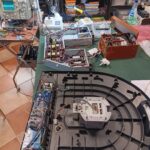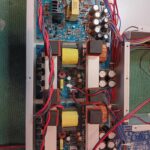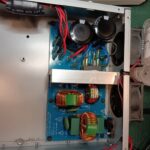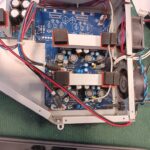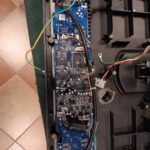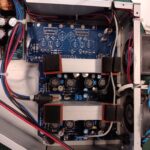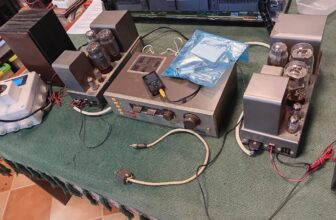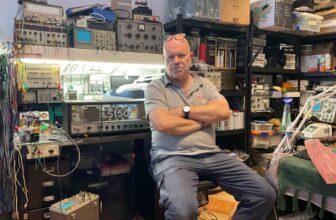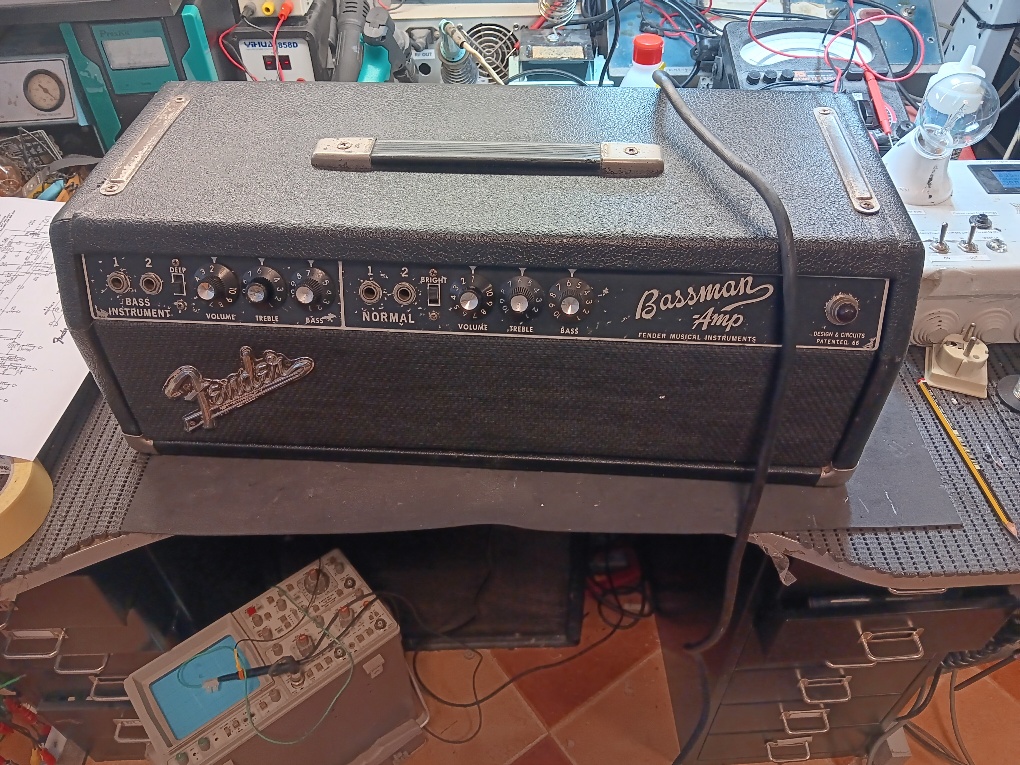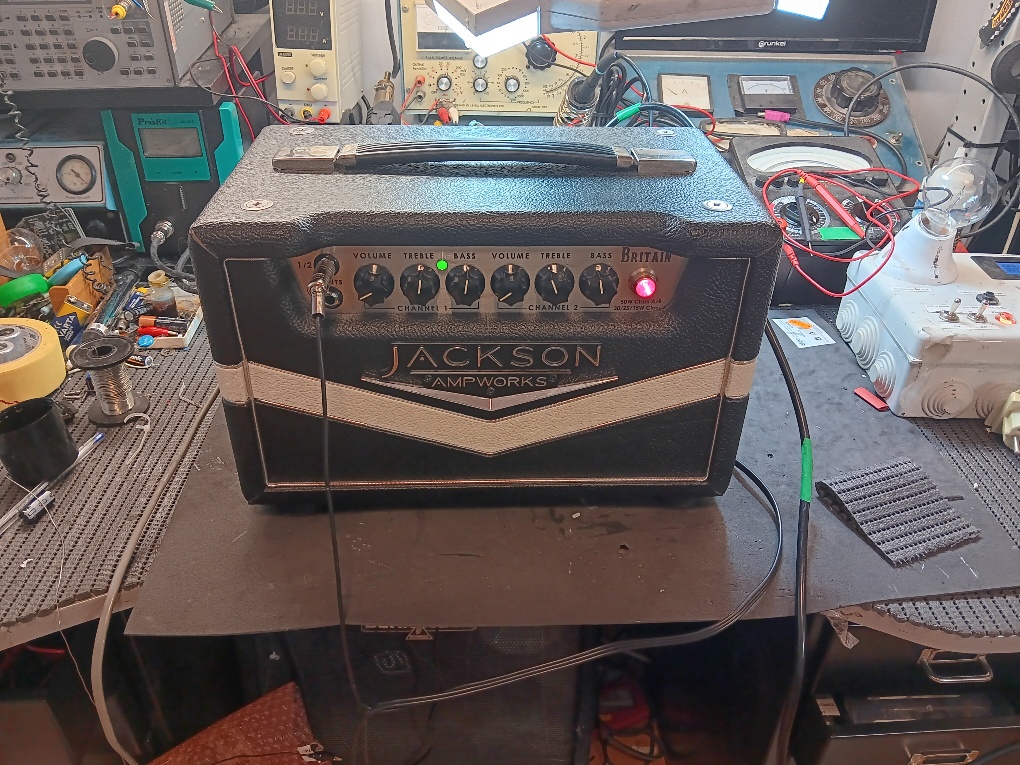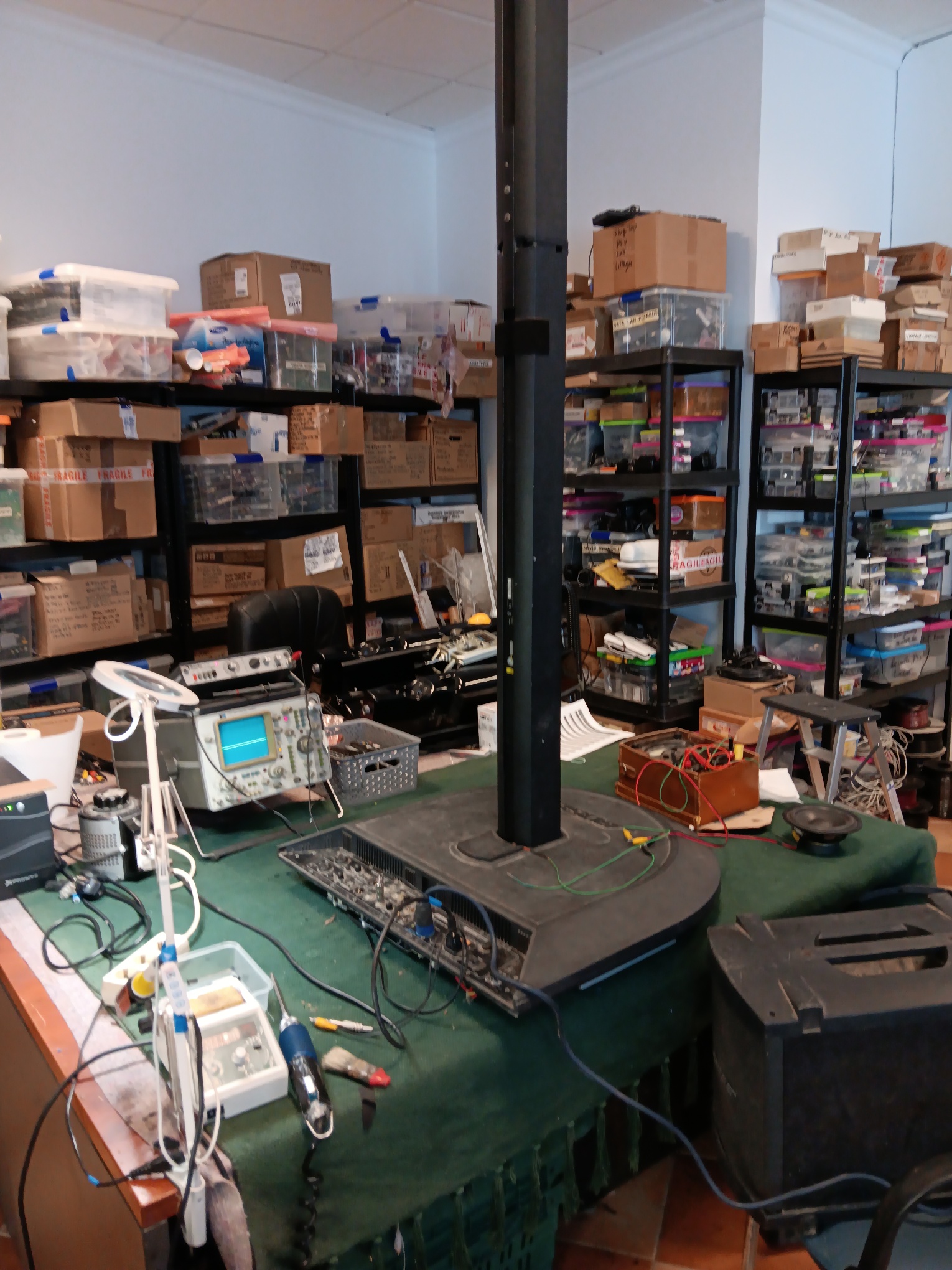
BOSE Model L1
And…, one wonders why I hate Bose equipment.
This Model L1 came in reported as dead. Best thing for it. These things seem to be popular with the musicians, so I have to take the rough with the smooth. Well, rough with the rough. With mains connected, it was drawing a few Watts, so probably the switch mode power supply was not running.
These things are far from easy to work on. Cumbersome, heavy and takes ages to dismantle. You will need a wheelbarrow to store all the screws. The higher frequency loudspeaker column plugs into the base, so testing is problematic when dismantled.
With the case removed, you then have to unwire the big encased chassis, and unscrew that from half the base. Once done, another 25 screws to remove the chassis cover to reveal the wondrous insides. Put these different size screws carefully in a box, then knock them on the floor. Forget about the two large sandwich boards with all the audio control and processing stuff which stays in the upper case, we have several boards to play with. 1 rectifier and filter board containing lots of Farads. 2 switch mode power supplies driving a base amplifier and a midrange amplifier. Oh, we can throw in an auxiliary switch mode power supply just to make things even more interesting. Please note, I am being serious for a change, always discharge to rectifier and filer board during testing. This packs a nasty DC punch.
In this case, the auxiliary power supply was dead. Without this running none of the other bits will come on. A quick check with Oscar the oscilloscope, showed the power supply was hunting, indicating a short somewhere. One of the rectifier diodes in the secondary side of the power supply was short circuit. So, all excited, quick replacement and a trip booked to the bar. No, same problem. I now spent 2 hours checking all components and replacing the controller IC. In total, we had 5 faulty components. The main culprit was a snubber diode across the switching transistor which tested okay, but must have been leaky. Now we had the auxiliary power supply running.
Attention turned to the 2 amplifier sections, which had nasty looking capacitors, all bulging, ready to go bang. Whoever designed the circuit board, obviously just had his or hers Adult movie channel blocked. To make things awkward, you have to unscrew the Class D audio ICs and remove the heatsinks, in order to unsolder and replace the capacitors.
With everything done, you have to hook up some temporary loudspeakers, lay the monstrosity of the chassis onto the case and apply angry pixies. Apart from some scratchy volume controls, all was working. Now for the massive reassemble.
Customer says…”it was only something simple then?” he is now in hospital.



